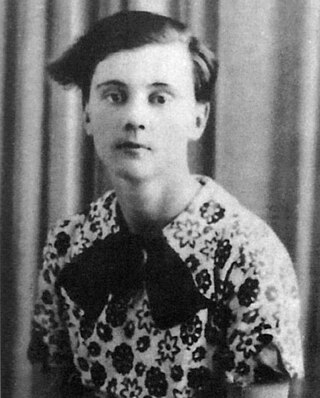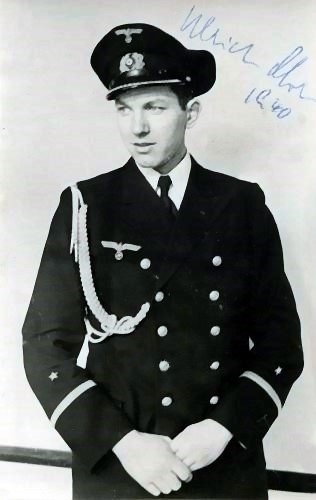
The German auxiliary cruiser Atlantis, known to the Kriegsmarine as Schiff 16 and to the Royal Navy as Raider-C, was a converted German Hilfskreuzer, or merchant or commerce raider of the Kriegsmarine, which, in World War II, travelled more than 161,000 km (100,000 mi) in 602 days, and sank or captured 22 ships with a combined tonnage of 144,384. Atlantis was commanded by Kapitän zur See Bernhard Rogge, who received the Oak Leaves to the Knight's Cross of the Iron Cross. She was sunk on 22 November 1941 by the British cruiser HMS Devonshire.

SS Absaroka was a steamer, named after the Absaroka Range of mountains in Montana and Wyoming, completed in February 1918 for the United States Shipping Board (USSB) which briefly operated the ship. From 17 September 1918 to 4 March 1919 the ship was commissioned as USS Absaroka with the identification number IX-2581 in United States Navy and operated by the Naval Overseas Transportation Service.

The Landing Craft, Tank (LCT) was an amphibious assault craft for landing tanks on beachheads. They were initially developed by the Royal Navy and later by the United States Navy during World War II in a series of versions. Initially known as the "tank landing craft" (TLC) by the British, they later adopted the U.S. nomenclature "landing craft, tank" (LCT). The United States continued to build LCTs post-war, and used them under different designations in the Korean and Vietnam Wars.
Marlag und Milag Nord was a Second World War German prisoner-of-war camp complex for men of the British and Canadian Merchant Navy and Royal Navy. It was located around the village of Westertimke, about 30 km (19 mi) north-east of Bremen, though in some sources the camp's location is given as Tarmstedt, a larger village about 4 km (2.5 mi) to the west. There were also American merchant seamen detained here as well as some U.S. Navy personnel.
SS Antenor was a UK steam turbine passenger and refrigerated cargo liner launched in 1924. She was the third of five ships to bear the name.

The SS Empire Miniver was a British steam merchant ship. She was originally an American merchant, launched in 1918 as SS West Cobalt. During a brief stint in the United States Navy in 1919, she was known as USS West Cobalt (ID-3836).
SS Patroclus was a British steam turbine passenger and refrigerated cargo liner launched in 1923. She was the third of five ships to bear the name.

HMS Hector was a UK steam turbine passenger and refrigerated cargo liner launched in 1924. She was the fourth of six civilian ships to bear the name.

SS Letitia was an ocean liner built in Scotland for service with the Anchor-Donaldson Line. She continued to serve with its successor company Donaldson Atlantic Line. At the start of the Second World War in September 1939, the British Admiralty requisitioned the ship for service and had it converted to serve as an armed merchant cruiser. She was withdrawn from this service in 1941 to become a troop ship.

For other ships called SS Oronsay, see List of ships named Oronsay
The SS Ranpura was a British passenger and cargo carrying ocean liner built by R. & W. Hawthorn Leslie and Company at Newcastle upon Tyne for the Peninsular & Oriental Steam Navigation Company in 1924. She was the first of the P&O 'R' class liners that had much of their interiors designed by Lord Inchcape's daughter Elsie Mackay. She was launched 13 September 1924 and sponsored by C.C. Straker, wife of the chairman of Hawthorn Leslie and Company.
Leander was a 989 GRT coaster that was built in 1925 by Atlas Werke AG, Hamburg, Germany. The British Royal Navy captured her in November 1939 and impressed her into service as Empire Crusader. She was bombed and sunk in 1940.
Empire Engineer was a 5,358 GRT refrigerated cargo ship that was built in 1921 as Canadian Commander by Canadian Vickers Ltd, Montreal, Quebec, Canada. She was sold to an Italian firm in 1932 and renamed Giaocchino Lauro. She was seized by the United Kingdom in 1940, passed to the Ministry of War Transport (MoWT) and renamed Empire Engineer. She served until 4 February 1941 when she was torpedoed and sunk by U-123.

SS Ashkhabad was a merchant ship of the Soviet Union sunk in 1942. She had been built as a British merchant ship in 1917 in Glasgow, Scotland as War Hostage. Over the next three decades she passed through a number of owners and had several different names; Milazzo (1919–1924), Aldersgate (1924–1925), Mistley Hall (1925–1934), Kutais (1934–1935), Dneprostroi (1935–1938) and finally Ashkhabad from 1938 to 1942. Originally designed as a freighter, she was at several points converted to a tanker to carry fuel oil. At the time of her loss the four hundred foot tanker was owned by the Soviet Union's Sovtorgflot organisation. She was torpedoed on 29 April 1942, and then sunk as a hazard to navigation on 3 May 1942. The wreck is now a popular dive site.
SS Sagaing was a British passenger and cargo steamship that was launched in Scotland in 1924. Her peacetime route was a scheduled service between Glasgow or Liverpool, and Rangoon. In 1942, Japanese aircraft damaged her in Trincomalee Harbour in the Easter Sunday Raid on Ceylon. In 1943 she was scuttled to form a pier. In 2018 her wreck was raised, removed from the harbour, and scuttled in deeper water.

Susan Dorothea Mary Therese Hilton was a British radio broadcaster for the Nazi regime in Germany during the Second World War.

The Tirranna was a Norwegian merchant ship captured by the German merchant raider Atlantis during the Second World War. She took on the passengers and crew of the Kemmendine which had been captured and sunk by the Atlantis in July 1940 and sailed for France as a prize ship with a cargo of looted goods. On 22 September 1940 she was torpedoed off the coast of France by the British submarine Tuna and sank with 87 lives lost. The survivors were taken to a German naval facility in Royan.

Ulrich Mohr was a German naval officer and the adjutant on the Kriegsmarine auxiliary cruiser Atlantis during the Second World War, where one of his functions was to board captured ships and search for secret papers that might be of use to the German war effort.











